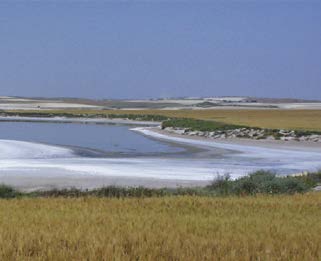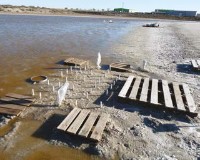AQUASALTIndicators for improved management of wetlands

Financed by ERANET MED and coordinated by the UPPA, the AQUASALT project studies the impact of human and agricultural activities in arid and semi-arid environments.
Water resources are becoming a major global concern, particularly in arid and semi-arid zones subject to intense agricultural stress. One specific example is the Mediterranean region where water resources are scarce and hard to come by. “We are aware that human and farming activities have an effect on the water resources and ecosystems of these very particular environments, but we currently lack reliable indicators for measuring exactly what their impact is,” observes Robert Duran, microbiology professor at the IPREM (Institute for analytical sciences and physical-chemistry for the environment and materials). He fully intends to fill the void through the AQUASALT project, kicked off last September, with the support of the European program ERANET MED.
“The main objective is to characterize the impact of farming activities on microbial communities in order to determine relevant microbial indicators. These bio-indicators, adapted to the appearance of salt, should provide essential information for evaluating environmental health and helping to improve how these wetlands, so specific in nature, are managed.”
Contact :


